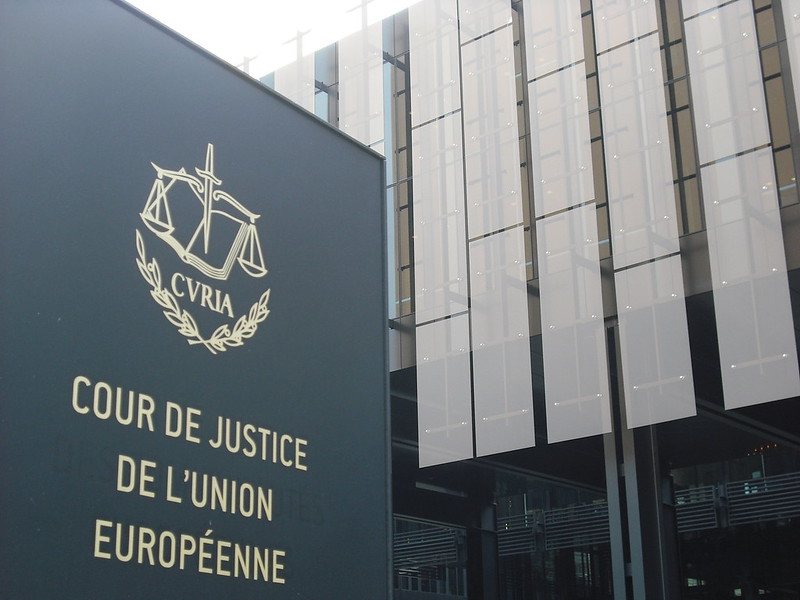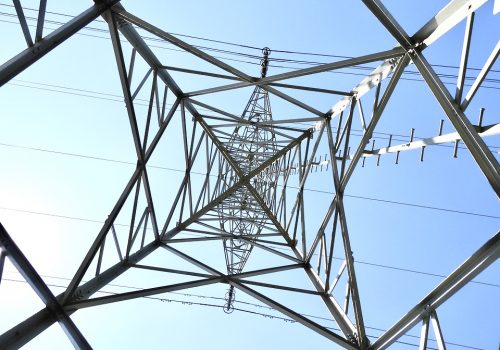Introduction: Gazprom’s folly
After six years of debate and controversy over Nord Stream 2, the pipeline is now close to physical completion. Gazprom now wants to ensure that it is not just completed, but that it also receives all European Union (EU) regulatory clearances rapidly so that the pipeline can then be brought into full operation. Given that these regulatory clearances are contained principally in the 2009 EU Gas Directive, and raise a series of questions as to how Nord Stream 2 can be brought into compliance with the directive, this process may take some time. In addition to whatever decisions are made by the German regulator and the European Commission, it is likely that at least one EU member state will initiate a legal challenge in the EU courts.
There is now compelling evidence that Gazprom, which wholly owns the Nord Stream 2 pipeline, will try and force the hand of the EU and German authorities to grant it regulatory clearance. This year, Gazprom has reduced gas supplies to Europe by approximately 20 percent compared with pre-pandemic levels. This reduction, combined with other temporary factors such as low storage stocks and higher Asian demand, has sent European gas prices spiraling upwards to $10 per million British Thermal Units (MMBtu), the highest prices Europe has seen in thirteen years. At the same time, Gazprom has restricted supply to the European market and its executives have made it clear that, should Nord Stream 2 be fully authorized, gas will flow freely across the European continent.
However, Gazprom’s attempt to gain leverage is extremely unwise. In the first place, it will make it easier for opponents of the pipeline to challenge its regulatory clearance. For instance, it will be easier to sustain the argument that Gazprom, as the owner of the pipeline, poses a supply security risk to the EU in respect to Article 11 of the Gas Directive. Secondly, if Gazprom seeks to force the EU to undermine the integrity of its own legal regime under economic pressure, it creates an existential threat that the EU has no choice but to resist. The EU is, above all, based upon the operation of its legal order, which is underpinned by the principle of uniform application of EU law. Thirdly, as with the 2009 gas crisis, this attempted leveraging of Russia’s gas supply for political purposes is likely to trigger a reaction from the United States and the EU to enhance the supply security of EU member states, as well as neighboring countries such as Ukraine. The wiser course of action for Gazprom would be to step back from this folly and, in the next round of capacity auctions, begin the process of booking additional capacity across the European transit networks in Ukraine, via the Yamal pipeline and Nord Stream 1.
Executing its leverage policy
Over the last few months, it has become increasingly clear that Gazprom’s traditional pattern of gas sales into the European market has been abandoned. This perceived change in business practice was reinforced in June when GTSO, the Ukrainian transmission system operator, offered 67 million cubic meters per day (mcm/d) of interruptible capacity for July for auction on the Budapest-based Regional Balancing Platform (RBP). Despite rising commodity demand and consequent rising natural gas prices, Gazprom did not seek to book those capacity slots. The news that no interruptible capacity has been booked sparked a further surge in natural gas prices.
It is true that there are also other factors at play here. The unusually long European winter has depleted gas stores across the continent; as Asian economies have eased COVID-19 restrictions and the global economy has rebounded, the weight of liquefied natural gas (LNG) trade has shifted from Europe to Asia. It is also the case that high European carbon prices at €50 a tonne have increased demand for gas over coal for power generation.
When faced with increasing European demand, Gazprom’s usual response has been to pump more gas into the market, for example, by feeding gas into the spot market. This time, however, Gazprom has not done so. It has continued to provide gas to the market, but only volumes that align with its current long-term supply contracts. As a result, Gazprom is providing approximately 20 percent less gas into the European market in comparison to pre-pandemic levels.
It could be argued that the Ukrainian transmission system operator GTSO is only offering interruptible capacity and not firm capacity on the Ukrainian network. This is less attractive to a customer who is booking transit capacity than firm capacity, which is guaranteed transit. The argument therefore goes that if firm capacity were available, Gazprom would be more willing to provide additional supply. However, GTSO has indicated that it is prepared to provide firm capacity if Gazprom were interested.
Gazprom and the Russian state’s intentions are not only obvious based on their divergence from traditional sales patterns but also the words of senior officials. In May, Elena Burmistrova, Director General of Gazprom Export, said that Gazprom, “would be able to cover additional demand with the commissioning of Nord Stream 2.”
Even more directly, at the St Petersburg International Economic Forum in June, President Vladimir Putin interjected during a moderated discussion on Russian gas feeding the Ukrainian transit network, asking, “do you think we have such a duty to feed everyone or what?” He then went on to say that “everything is possible, we’re ready for this and want [future Ukrainian transit] but we need goodwill on the part of our Ukrainian partners.”
He then added that Ukraine, “should spend money not in order to maintain [its] army and aim it at solving the problem of Donbas by force, but in order to improve the economy, [and] work with people.”
Divergence from traditional sales patterns, the refusal to take up any more bookings through the Ukrainian transit network, the 20 percent fall in the usual level of gas sales, and statements from senior executives and government officials all point in one direction: gas flows are being reduced to pressure Germany and the European Union into pushing Nord Stream 2 through its regulatory certification process.
EU regulatory clearances
Physical completion of a pipeline does not mean that the pipeline can immediately be put into operation. New pipelines are subject to a series of national and European laws that mandate who can own the pipeline and how it should be operated. The key legislation is the 2009 EU Gas Directive, which, as a result of amending legislation adopted in May 2019, now also formally applies to import pipelines such as Nord Stream 2.
Per the 2019 amendment to the Gas Directive, as a new pipeline, Nord Stream 2 must be unbundled, meaning Gazprom cannot both own the pipeline and provide gas through the pipeline, and third-party access must be made available. This means that Gazprom’s competitors such as Rosneft and Novatek would be able to sell gas via Nord Stream 2. There must be also be tariff price transparency.
However, Gazprom opposes pipeline unbundling, primarily since it does not want to give its competitors access to its infrastructure. Gazprom will also resist price transparency rules, since pricing information may be used to bring further price review challenges to existing long-term supply contracts with many of its other European customers.
If Gazprom wishes to avoid these liberalization obligations, it has to apply for an exemption under Article 36 of the Gas Directive. Article 36, however, is clear that an exemption can only be granted if the investment increases competition in gas supply and enhances security of supply, and the exemption must not be detrimental to competition or the effective functioning of the internal market for natural gas.
As the experience of the last two decades demonstrates—encompassing the Yamal pipeline, Nord Stream 1, and Turk Stream 2—a new pipeline will not add to supply. Gas supply will be diverted from the Ukrainian pipeline network to a new Russian-sponsored pipeline route. This historical analysis is underpinned by the practical reality that gas flows transiting Ukraine are only around 40 billion cubic meters (bcm) (under the terms of the 2019 transit agreement), and the capacity of Nord Stream 2 is 55 bcm. The danger to the continued operation of the Ukrainian transit system is clear. Furthermore, without a significant flow of natural gas, the Ukrainian network will not remain technically or financially viable and will end up as scrap metal.
Therefore, bringing Nord Stream 2 online with the intent of terminating or significantly reducing the gas transit role of Ukraine will decrease security of supply. Currently, the EU has three different routes to market for Russian gas in Northern and Central Europe: Nord Stream 1, Yamal, and the Ukrainian transit route. With the addition of Nord Stream 2, which for most of its path follows the same route as Nord Stream 1, route diversity is diminished. Instead of having three routes, the EU only will have Nord Stream 1/Nord Stream 2 and Yamal from which to offtake gas.
As a consequence, with the loss of the Ukrainian transit network, the EU loses a significant energy security hedge that stems from the huge capacity of the Ukrainian transit network, which has 146 bcm of pipeline capacity and 32 bcm of storage capacity. This sort of capacity makes it possible to meet peak demand, manage atypical supply surges, and support the intermittent availability of renewable power. This latter point is of particular importance given the EU’s Green Deal targets and the EU Commission’s goal of deploying more renewables across the continent. This will create a greater need for surge capacity that the Ukrainian network is able to provide.
In addition, it is difficult to see how Nord Stream 2 can be deemed pro-competitive, as it strengthens Gazprom’s already dominant position in Central and Eastern Europe. It undermines the competitive impact of the resale of Russian gas in EU and Ukrainian markets by undermining the Ukrainian transit route. And the effect of the loss of that route, in addition to the flooding of the west to east interconnectors, is to make it much more difficult for competitors to enter the gas market in the region, effectively splitting the Northwest European market from the Central and Eastern European market.
A further problem for Nord Stream 2 is Article 11 of the Gas Directive. This requires an assessment be conducted as to whether granting certification puts EU and member states’ (in this case Germany) security of supply at risk prior to certification.
Gazprom has, to say the least, posed challenges to the energy security of European states over the last three decades. One expert identified approximately forty politically motivated Russian energy cutoffs between 1991 and 2004. From 2014 to 2015, Russia attempted to cut off Slovakian, Hungarian, and Polish supplies in order to forestall contracted Russian gas being resold to Ukraine via reverse flow.
In addition, Gazprom in 2021 is now operating outside its own traditional sales patterns to reduce supply in order to force the EU and its member states to accept the full operational opening of Nord Stream 2. It is difficult to argue that Gazprom is not putting the supply security of Germany and the EU at risk as a whole, when it is refusing to put more gas on the market, where consumer prices have spiraled. This view of Gazprom’s actions is further underpinned by the statements of senior Gazprom and Russian state officials who have made it clear that there will be plenty of gas available once Nord Stream 2 is granted certification.
Gazprom’s ability to escape from the application of the EU’s energy liberalization rules has been recently dealt another blow by the ruling of the European Court of Justice (CJEU) in the C-848/19P Germany v. Poland (OPAL) appeal case. In that case, the CJEU took the view that the principle of solidarity contained in Article 194(1) of the Treaty on the Functioning of the European Union is legally binding. The Court said that the spirit of solidary between member states mentioned in that provision constitutes a specific expression in the field of energy of the principle of solidarity, which itself is one of the fundamental principles of EU law. The consequence is that both Article 36 and Article 11 are subject to the principle of solidarity and have to be interpreted in accordance with that provision. Having to take the supply and route diversity risks—and other negative consequences for other EU member states—into account makes it that much more difficult to find a way through the EU regulatory system.
Nord Stream 2, therefore, is likely to have a very problematic journey through the EU’s energy liberalization regulatory clearance regime, and Gazprom is making that journey more problematic by seeking to manipulate gas supplies to ensure it obtains all the necessary clearances to operate the pipeline.
Conclusion: Undermining access to the EU market
The best advice to Gazprom would be to refrain from using its gas supplies to exert geopolitical leverage over the European Union, which will undermine—not promote—Gazprom’s interests and access to the EU market.
What Gazprom and Kremlin officials fundamentally do not appear to appreciate is that the EU is founded as a legal order. It can only function effectively on the basis of a uniform application of its rules across EU territory. A recent example of this can be seen in the fraught Brexit negotiations. Brussels gave London a choice between being part of the single market and customs union with full application of EU rules, or being outside and treated as a third state. It would not tolerate a special arrangement by which the United Kingdom would have market access but would not have to comply with the market access rules embedded in the EU legal order. Similarly, the EU will fiercely resist such a brazen attack on its legal order that Gazprom and the Kremlin are putting in play via their gas leverage operation. Even if a German regulator gives way to Russian interests and greenlights the pipeline into full operation, the Commission—as the Guardian of the Treaties—will have no choice but to resist, backed up by many member states and ultimately supported by the EU Court of Justice.
The Kremlin is inadvertently in the process of triggering an existential threat to the European Union which will force the EU institutions and member states to robustly oppose it. In the course of this conflict, the operation and functioning of Nord Stream 2—and who supplies gas to the European market—will become secondary issues to that of sustaining the EU’s legal order, the entire basis upon which the EU operates.
In addition to a fierce legal resistance to Gazprom’s leverage play, there is also a real danger for Gazprom that, if this price leverage operation continues, EU member states will then seek to finally eliminate their dependence on Russian gas. The Kremlin’s public willingness to manipulate the supply of gas and send the price spiraling upward in order to force its pet energy project through the EU’s legal machinery will lose Moscow the support of most of its remaining allies.
It also opens up the prospect of EU action, supported by the United States, to seek to remove Gazprom as a major supplier in Central and Eastern Europe, and limit the amount of gas EU states as a whole take from Gazprom.
It would not be difficult for the EU and United States to develop collectively a two-pronged gas and renewable strategy. The first prong would seek to ensure that Europe has sufficient supplies of trusted gas from reliable suppliers. This would involve more LNG terminals in the ports adjacent to the Baltic Sea, a further expansion of the Baltic Pipeline, and the implementation of the Three Seas Initiative plan for the North-South pipeline. In addition, sufficient interconnections would need to be put in place across the Ukrainian-Polish border so that Ukraine could be supplied with gas, and EU states would have full access to Ukraine’s enormous gas storage capacity.
With greater access to trusted gas, it would then be possible to safely roll out and expand renewable capacity across Central and Eastern Europe, especially Ukraine. As renewable capacity increases, solar and wind power would further add to the region’s energy security, reducing dependence on power generation from Russian gas sources. At the same time, power networks across the region could then be upgraded to maximize the use of renewable resources.
Continuing its leverage play is a very risky strategy for Gazprom, since it undermines trust in its product, encourages legal resistance, and pushes EU member states to find alternatives to Russian supplies. It would be well advised to cease and desist in its leverage operation before it is too late.
Alan Riley is a Nonresident Senior Fellow at the Atlantic Council Global Energy Center.
Meet the author
Learn more about the Global Energy Center

The Global Energy Center develops and promotes pragmatic and nonpartisan policy solutions designed to advance global energy security, enhance economic opportunity, and accelerate pathways to net-zero emissions.
Image: Court of Justice of the European Union Central Building and Sign in Luxembourg (Transparency International/Flickr) Creative Commons License: Attribution-NonCommercial-NoDerivs 2.0 Generic



